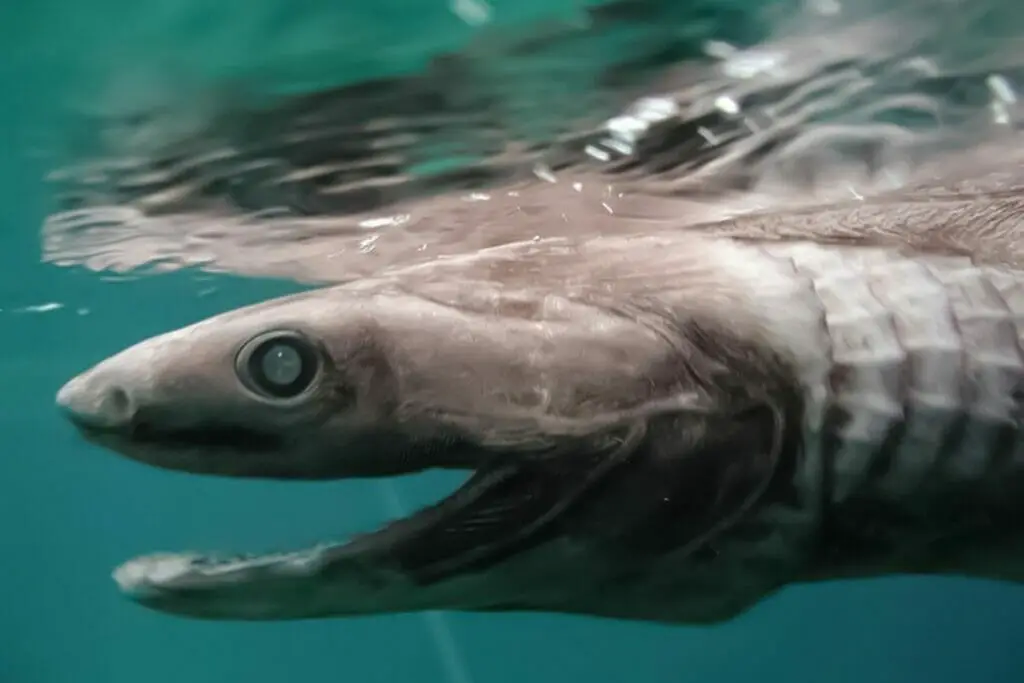Located in the western Pacific Ocean and spanning over 1,500 miles, the Mariana Trench is known as the deepest location on Earth with there being many interesting and unique animals residing within its dark and mysterious waters.

With that being said, here are some of the strangest and most interesting animals that can be found occupying the murky depth of the Mariana Trench.
Dumbo Octopus
While their large floppy ears are the reason for their name, what is even more strange is that these ‘ears’ are actually fins that this octopus species uses to swim, along with its eight miniature tentacles helping to guide this small and slender creature through the dark depths of the Mariana Trench.
They often live at water depths below 3,000 feet which is why they are exclusive to the deep waters of the Mariana Trench, and while they have probably resided there for decades, it was actually only in 1990 that a live dumbo octopus was seen through a submersible for the first time.
As of today, there are at least 15 different species of dumbo octopus’ that are known, however, each one shares a similar ‘umbrella’ appearance due to their arms being connected by webs of skin with the edges of their tentacles slightly sticking out.
Deep-Sea Hatchetfish
The deed-sea hatchetfish is one of the most devious and terrifying fish that you will ever see, with their spooky face and bulging eyes, they are a common predator that can be found feasting on smaller fish in the Mariana Trench.
These fish have photophores running across their entire body which they use to produce a small glimmer of light whenever they approach their prey, making them almost invisible until it’s too late.
Some of the 45 different species of this fish take part in the world’s most extensive migration patterns, traveling from depths of 1,500 meters and occasionally appearing in shallower waters, making them a lurking presence across every inch of the Mariana Trench.
While they only have a lifespan of about a year, deep-sea hatchetfish are still some of the fiercest and most threatening animals that can be found in this deep and mysterious part of the Atlantic Ocean.
Vampire Squid
While its fearsome name implies that the vampire squid is a frightening and bloodthirsty predator, the reality is that they are actually gentle scavengers that can be found in only the deepest parts of the sea, including the Mariana Trench where they feed almost exclusively on ‘marine snow’ which is a continuous shower of organic detritus that falls down from the upper layers of the ocean.
These squids are actually the only known living cephalopod that does not catch and eat live animals as part of their diet, instead, they themselves are a common food source for many bigger fish who can also survive off the small amounts of oxygen in the deep depths of the sea.
Vampire squids are also well known for turning themselves ‘inside out’ and firing out sticky bioluminescent liquid to scare away predators and defend themselves, so while this creature may seem dangerous at first, it is actually one of the more passive fish you can find swimming among the Mariana Trench.
Frilled Shark

Frilled sharks are known for having a very traditional and pre-historic look that gives them a very similar appearance to eels due to how slender and long they are, with them being one of the most primitive species of shark that are still living today.
They generally live between 100 and 1,000 feet below the surface, making the deep Mariana Trench the perfect spot for these sharks to live who love nothing more than to feed on squid and small fish using their multiple rows of razor-sharp teeth.
While squids and other cephalopods make up most of a frilled shark’s diet, they have even been known to feed on smaller sharks, along with bony fish and sea slugs, making them some of the fiercest predators patrolling the Mariana Trench.
Zombie Worms
While their name might imply that they crave the brains of other animals, zombie worms were actually first discovered living off of dead whale bones, however rather than consuming the bone directly, they digest the fats within the bone, which is why large whales are the perfect animal for them to feed off.
While bones are their only food source and the core to their survival, zombie worms actually don’t have a mouth or stomach, instead, they use secreting acid to dissolve the bone before then sending a series of tendrils colonized by bacteria to break down the fat into nutrients which the worms then absorb.
Since they were only discovered in 2002, there is still not a lot known about these mysterious creatures, however, they are known to be rampant across the mid to bottom areas of the Mariana Trench, where they can find as many large dead animals to feed on as possible.
Sea Cucumber
These long and leathery creatures are echinoderms, making them very similar to starfish and sea urchins, however unlike those aquatic creatures, the sea cucumber has tentacles surrounding its mouth which it uses to help it eat, with its diet mainly consisting of plankton, algae and decaying matter.
Sea cucumbers have actually been referred to as the ‘janitor of the sea’ since they play a huge part in maintaining a healthy ecosystem, specifically because of the 64,000 metric tons of feces they produce each year that cleans the sediment around them, benefitting other life forms that live in the same part of the sea.
They are known to reside at the very bottom of the Mariana Trench and don’t grow any bigger than seven inches in length.
Summary
The dark and murky depths of the Mariana Trench are home to some of the strongest and most fascinating creatures in the world, so it’s never a bad idea to learn about how they live and what makes them so unique.








